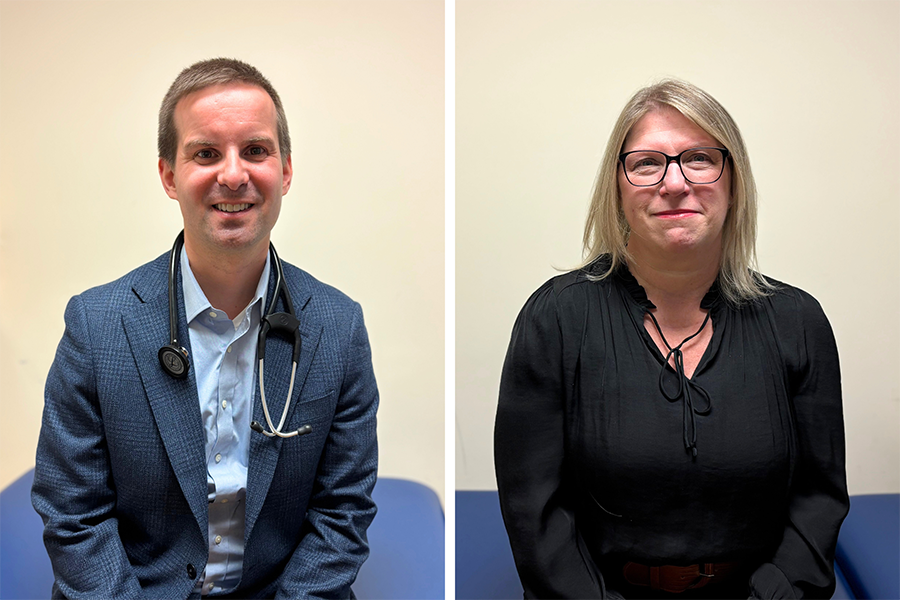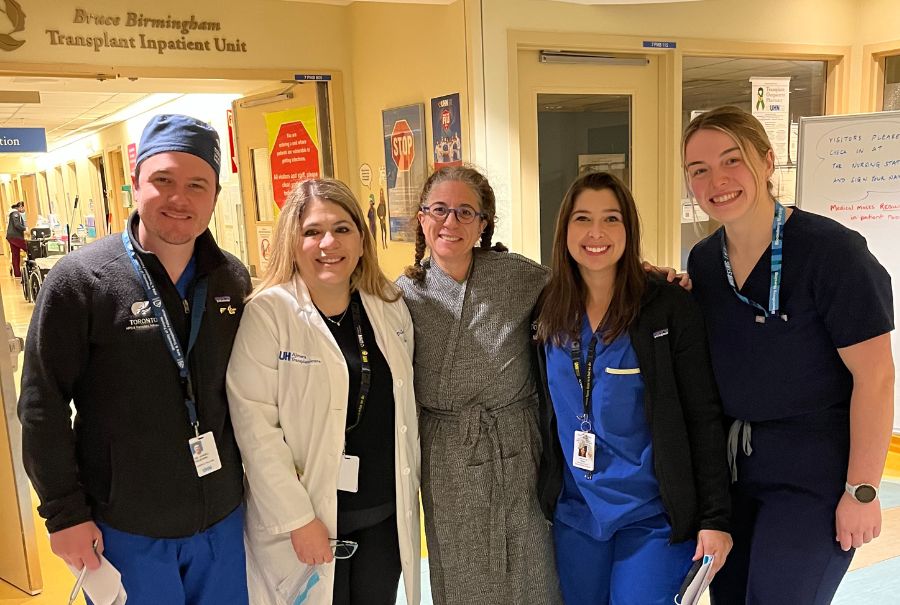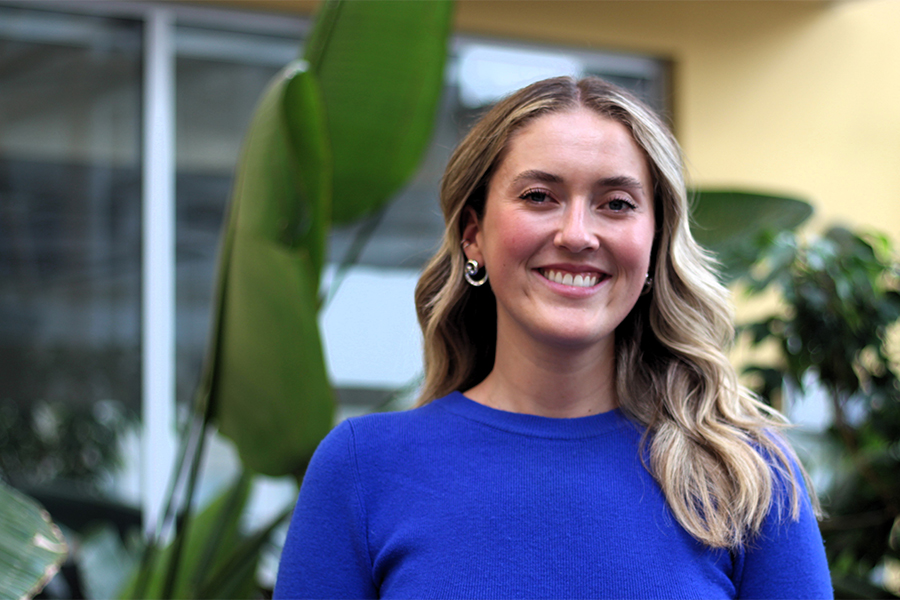
As Canada’s population ages, health care systems are facing a pivotal challenge — and opportunity — to adapt and evolve. At UHN, older adults already represent a growing share of patients, many of whom are living with frailty and complex health needs. Recognizing this shift, UHN is launching a comprehensive Older Adults Action Plan, transforming how care is delivered to this vital population.
Dr. Richard Norman, Geriatrics Lead at UHN, and Dr. Carolyn Gosse, UHN Clinical Vice President, are leading the new Older Adults Action Plan. They recently sat down to discuss it.
Why is UHN adopting an Older Adults Action Plan?
RN: Older adults are the fastest-growing demographic in health care. Ontario is going to add around 1.6 million older people in the next 20 years. We also know from our internal data that UHN is already seeing year-over-year proportional increases in the number of visits by older people.
The people UHN sees also tend to be frail. More than half of our older adults in inpatient programs are frail or pre-frail, and those folks tend to have a higher proportion of utilization of health care or health services. They’re more likely to experience poor outcomes and may have difficulties with things like access to care because of their health conditions or frailty, and so tailoring health care to this population is the right thing to do.
What does the plan aim to achieve?
CG: Our plan is to identify the best practices in the care of older adults and ensure that we are embedding those best practices across all the care provided at UHN. It is very much focused on specific interventions that we can do as care providers or modifications in the physical environment itself that would improve outcomes for older adults. Our goal is to improve their experience and the experience of caregivers, support smooth transitions to the community, which is often a challenge, particularly for some of our higher-risk older adults.
RN: We aim to deliver the best experience and outcomes for both older adults and their caregivers through innovation in care, education and research. The idea is that the experiences and needs of older adults are really interwoven. We want their unique perspective to be considered when UHN is planning programs and to ensure we’re delivering whole, person-centered care that’s aligned with older adults and caregiver needs, because that may be distinct from what a younger person might need.
How is the plan going to achieve this?
RN: Our focus from the outset has primarily been on collaboration and engagement with people and teams across UHN — identifying these various areas of expertise that already exist here and trying to harness or unify them. It’s about leveraging opportunity, prioritizing impact and trying to align with work that’s already happening.
The action plan itself is focused on practical outcomes for both older adults and care teams. We have a total of 25 specific projects that have been put forward, which we will unfold over several years. We have some that are already in motion, which will reap more immediate results.
CG: We will support the successful implementation of these initiatives by engaging with our Older Adult Council. Our Council is a team with representation from across UHN that will help to advise and provide oversight of the implementation of the strategies over time, and in fact, have helped us identify some of the early initiatives that we’ll be implementing.
How are we going to see the action plan rollout? What tangible elements will be in place?
CG: We’ve identified a number of key strategies that we think we can achieve in the first year. We’ve chosen those based on high impact and feasibility with our current work plans across UHN. Examples of those include looking at ways to systematically support safer prescribing of high-risk medications for older adults. We’ve also been partnering with our Facilities Management – Planning, Redevelopment & Operations team to embed standards in design and construction that specifically create an environment that’s appropriate for older adults in the new Surgical Tower at Toronto Western Hospital, which is set to open in 2028.
RN: Another one of our more immediate projects is our work on improving measurements of outcomes that are specific or relevant for older people, such as better characterization of people’s function before, during and after hospitalization. This is something that’s very relevant for patient experience and quality of life but has typically been less emphasized. Being able to do basic things such as getting dressed or taking a bath is very important for people’s independence and also has downstream implications in terms of caregiving needs. Doing a better job at characterizing that will allow us to better target intervention to people in need.
Why is UHN the ideal organization to lead this strategy?
RN: UHN is Canada’s No. 1 hospital. We found through our environmental scan a tremendous breadth of talent here at UHN already. We identified more than 65 programs and partnerships with special expertise in caring for older people. And the goal of our plan is to harness this pre-existing expertise to support the best outcomes for older people to elevate UHN to be a world leader in healthy aging. We want to use the bench talent that already exists here and get it aligned in a way that can really be effective to care for our older people.
Is this part of UHN’s broader plan to evolve care in the community?
CG: We recognize as care teams across UHN that we need to help support appropriate transitions to the community and to set patients, their caregivers and their health providers up for success when they are discharged home. There are a number of initiatives where there is alignment. We’re working with our clinical teams who are implementing the Home First Discharge Program, which is focused on having the best possible wraparound care for patients to be successfully transitioned home, perhaps as an alternative to going to long-term care.
There are other initiatives where we would be very mindful of alignment, for example, in our Senior’s Emergency Medicine Program, where there might be an opportunity to be extending that planning into the community as well. And of course, in our Integrated Care Program, we’re looking for opportunities to be building off the work of our Older Adults Action Plan and help inform how that might augment or expand the opportunity for the integrated care support for patients when they’re discharged home.
RN: We know that older adults prefer to age in a place. They prefer to receive care in the community. Care in the community is generally more proactive, prevents things like admission and readmission. Our council is made up of representatives from, for example, primary care, and other projects unique to UHN. Our partners in the Naturally Occurring Retirement Communities (NORC) Innovation Centre would be a good example. They’re working to build support for older people within local communities so they can stay and thrive in their homes.
We’ve also identified priority populations in the community, for example people living with dementia, people with concurrent mental health issues, and people experiencing social isolation for particular attention because they tend to experience worse health outcomes. We’ve also specifically identified caregivers as a priority population. They are often overlooked but important members of the care team that also experience health care challenges of their own. So, we’re also focusing some of our efforts on meeting their particular needs.

No one ever changed the world on their own but when the bright minds at UHN work together with donors we can redefine the world of health care together.


